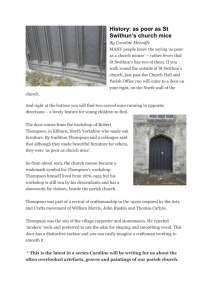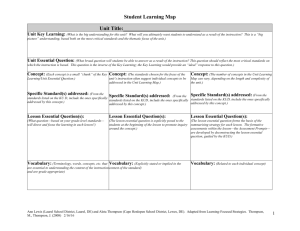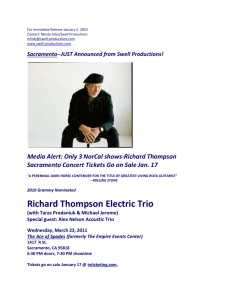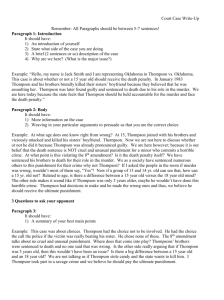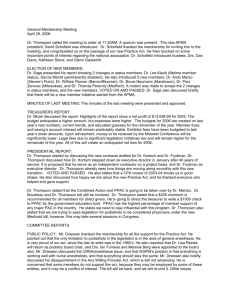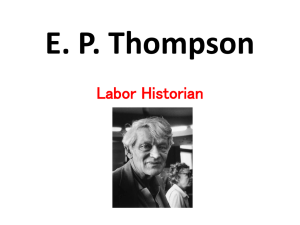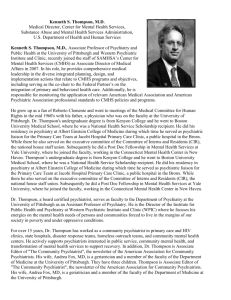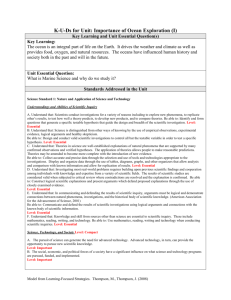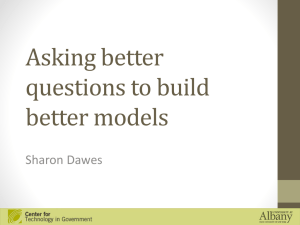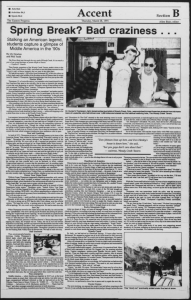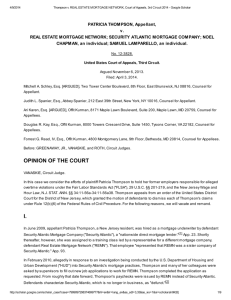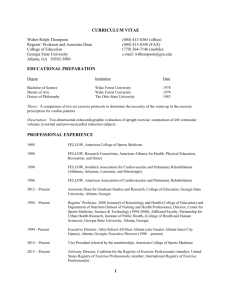1 Introduction - Computer Science and Computer Engineering
advertisement
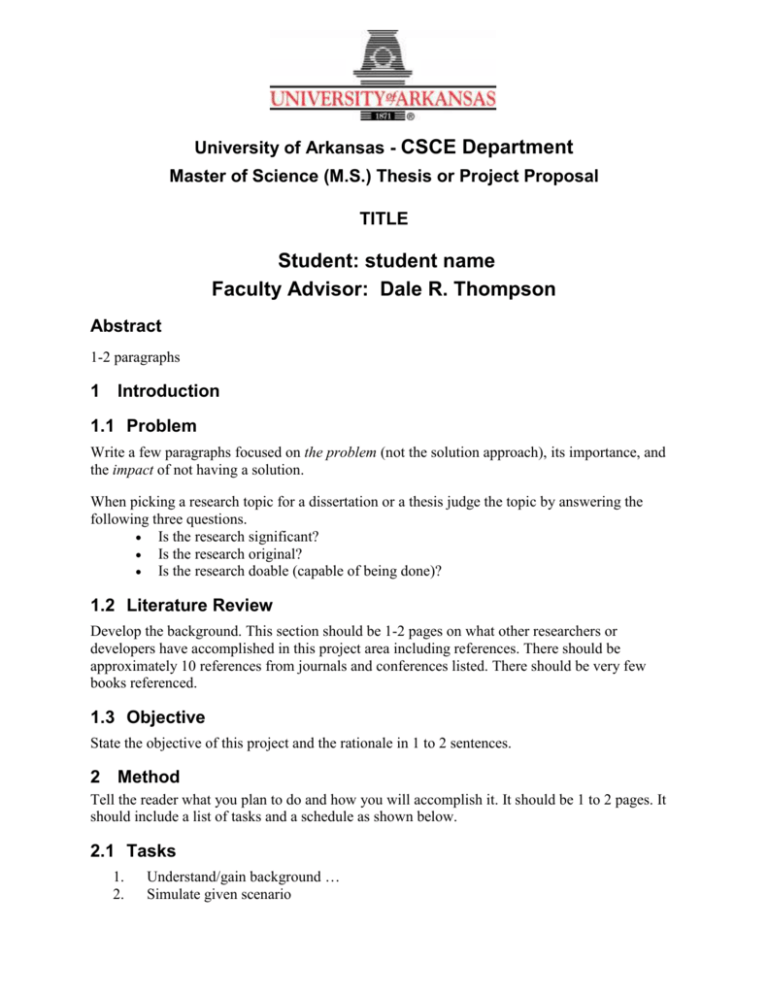
University of Arkansas - CSCE Department Master of Science (M.S.) Thesis or Project Proposal TITLE Student: student name Faculty Advisor: Dale R. Thompson Abstract 1-2 paragraphs 1 Introduction 1.1 Problem Write a few paragraphs focused on the problem (not the solution approach), its importance, and the impact of not having a solution. When picking a research topic for a dissertation or a thesis judge the topic by answering the following three questions. Is the research significant? Is the research original? Is the research doable (capable of being done)? 1.2 Literature Review Develop the background. This section should be 1-2 pages on what other researchers or developers have accomplished in this project area including references. There should be approximately 10 references from journals and conferences listed. There should be very few books referenced. 1.3 Objective State the objective of this project and the rationale in 1 to 2 sentences. 2 Method Tell the reader what you plan to do and how you will accomplish it. It should be 1 to 2 pages. It should include a list of tasks and a schedule as shown below. 2.1 Tasks 1. 2. Understand/gain background … Simulate given scenario Title (via View/HeaderFooter) – Student Name 3. 4. 5. 6. 7. Design new experiment Implementation it Test it Demonstrate it Document it 2.2 Schedule 1. 2. 3. 4. 5. 6. Understanding: 8/15/04 – 8/31/04 Design: 9/1/04 – 9/15/04 Implement: 9/16/04 – 9/30/04 Test: 10/1/04 – 10/15/04 Demonstrate: 10/16/04 – 10/31/04 Document: 11/1/04 – 11/15/04 3 Deliverables A M.S. thesis or project may be the end of a student’s graduate program, but it is an intermediate step in research for the faculty advisor. A student should understand that the finished project many times is handed off to another student to extend. Therefore, any code generated should be available in one directory and documented so that a new student can begin. The preferred directory structure is to have one directory and under that directory should be a “readme.txt” file and the subdirectories /bin, /obj, /src, /docs, /data, etc. The “readme.txt” should introduce the code and give the directory structure. In addition, a Makefile for compiling is required. The /docs directory should contain an “install.txt” file explaining out to install the code and a “user_guide.txt” on how to use the code. It should also include the final report in IEEE Proceedings format and the final PowerPoint presentation. The PowerPoint presentation should contain a flow diagram of the program. Code and data in one directory Final report in IEEE Proceedings format PowerPoint presentation 4 Key Personnel Student – student name – Lastname is a junior/senior/graduate student in the Computer Science and Computer Engineering Department at the University of Arkansas. She/He has completed relevant courses. Optionally, any relevant experience. Mentor - Dr. Dale R. Thompson – Dale R. Thompson is an Assistant Professor at the University of Arkansas in Fayetteville, AR. He received his B.S. and M.S. degrees in Electrical Engineering from Mississippi State University in 1990 and 1992, respectively. He received his Ph.D. in Electrical Engineering from North Carolina State University in 2000. He worked as an Electronics Engineer in the communications group at the U.S. Army Engineer Research and Development Center in Vicksburg, MS from 1992 to 2000. He has been with the Department of University of Arkansas M.S. Project Proposal – page 2 Title (via View/HeaderFooter) – Student Name Computer Science and Computer Engineering at the University of Arkansas since 2000. Dr. Thompson’s research interests are network design, survivable networks, and grid computing. 5 References 1. D. R. Thompson and G. L. Bilbro, “Sample-sort simulated annealing,” IEEE Transactions on Systems, Man, and Cybernetics – Part B: Cybernetics, vol. 35, no. 3, pp. 625-632, June 2005. 2. D. R. Thompson and G. L. Bilbro, “Comparison of a genetic algorithm with a simulated annealing algorithm for the design of an ATM network,” IEEE Communications Letters, vol. 4, no. 8, pp. 267-269, 2000. 3. D. R. Thompson and A. W. Apon, “Public Network Technologies and Security,” in The Handbook of Information Security (H. Bidgoli, Ed.). Hoboken, NJ: John Wiley & Sons, in press. 4. D. R. Thompson and A. W. Apon, “Public Networks,” in The Internet Encyclopedia, vol. 3, H. Bidgoli, Ed. Hoboken, NJ: John Wiley & Sons, 2004, pp. 166-176. 5. J. White and D. R. Thompson, “Load balancing on a grid using data characteristics,” in Proc. Int’l Conf. Grid Computing and Applications (GCA), Las Vegas, June 20-23, 2005. 6. A. Khan and D. R. Thompson, “Solving the WDM network operation problem using dynamic synchronous parallel simulated annealing,” in Proc. IEEE Southeastcon, Ft. Lauderdale, FL, April 8-10, 2005. 7. D. R. Thompson, B. Maxwell, and J. P. Parkerson, “Building the big message authentication code,” in Proc. 8th World Multiconference on Systemics, Cybernetics and Informatics (SCI 2004), vol. 2, Orlando, FL, July 18-21, 2004, pp. 544-549. 8. D. R. Thompson and S. Shin, “Mean value analysis of a database grid application,” in Proc. 3rd Int’l Conf. Networking, Guadeloupe, French Caribbean, March 1-4, 2004, pp. 775-780. 9. D. R. Thompson and M. T. Anwar, “Parallel recombinative simulated annealing for wavelength division multiplexing,” in Proc. Int’l Conf. Communications in Computing (CIC), Las Vegas, NV, June 23-26, 2003, pp. 212-217. 10. J. White and D. R. Thompson, “Using census data for grid partitioning,” poster at Oklahoma Supercomputing Symposium, Norman, OK, Oct. 6-7, 2004. 11. D. R. Thompson, A. Apon, Y. Yara, J. Mache, and R. Deaton, “Training a grid workforce,” poster at Oklahoma Supercomputer Symposium, Norman, OK, Sep. 25, 2003. 12. B. Maxwell, D. R. Thompson, G. Amerson, and L. Johnson, “Analysis of CRC methods and potential data integrity exploits,” in Proc. Int’l Conf. Emerging Technologies, Minneapolis, MN, Aug. 25-26, 2003. University of Arkansas M.S. Project Proposal – page 3
